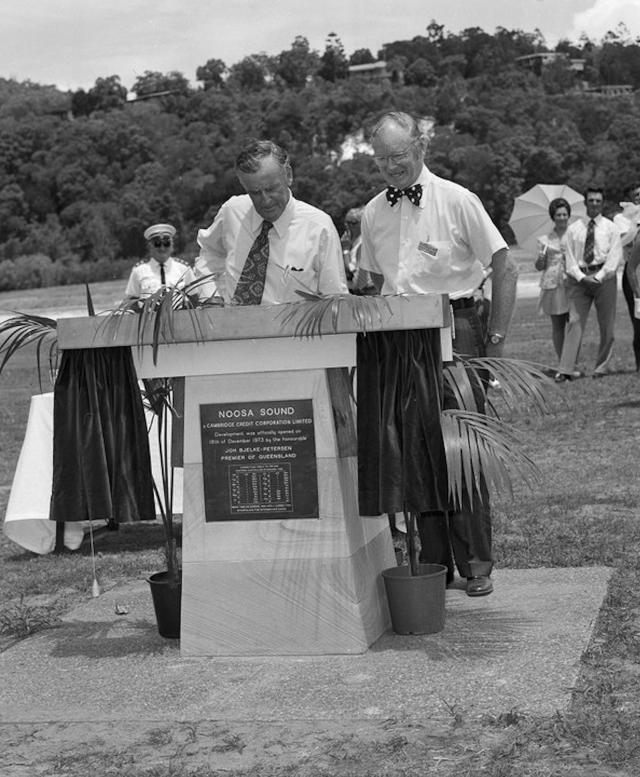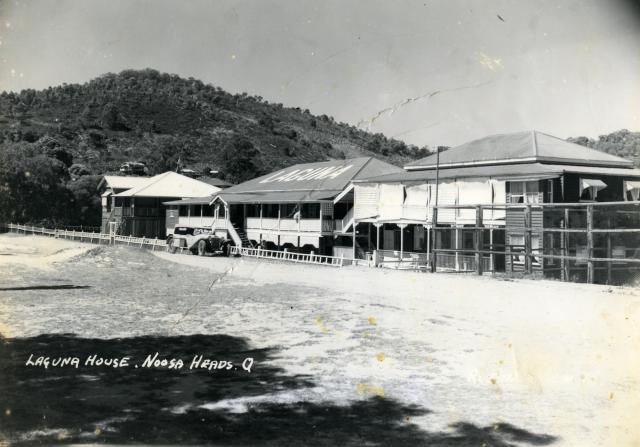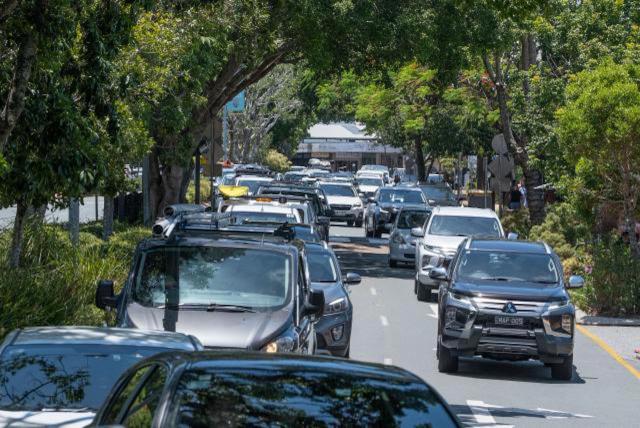
As we await what will hopefully be a Christmas gift verdict from Planning Minister Steven Miles, telling us how much of the population and development burden of the SEQ planning review Noosa will be expected to bear, it’s worthwhile noting that the State and Federal governments have been pushing population growth on us for more than a century, and not always succeeding.
The smart money is on Minister Miles delivering a considerable backdown from the shock waves felt throughout Noosa Shire last July, when an early draft of a regional plan responding to the housing crisis projected an increase of 18,677 people (or 33 per cent) between 2021 and 2046, from 56,873 to 75,550, thereby blowing the Noosa Plan and the so-called population cap out of the water. As Deputy Mayor Frank Wilkie noted in this masthead two weeks ago: “The State is looking at a more tailored response, depending on the needs of each LGA.” Let’s hope the councillor’s intel is correct, because Noosa has struggled for so long to keep growth in perspective, we simply can’t throw it all away now.
Although cattle properties were established on what is now Noosa Shire as early as 1853, the area’s population was still only 84 nearly 20 years later when Tewantin village was surveyed in 1871. Village settlement schemes promoted by the colony helped to more than double that number through the 1880s, but there was still no transformative growth until the Closer Settlement Scheme was introduced in 1906.
As economic historian Denise Edwards wrote in 2001: “By 1909, the transition of the Noosa district from an area of large cattle holdings in 1853 to one of closely settled dairy and agricultural farms was complete … As the Noosa Advocate asserted in 1912, ‘The unlocking of the Kin Kin lands, the Skyrings Creek areas, the repurchase of the Dath Henderson estate at Cooroy, the opening to selection of the Tuchekoi [timber] reserves, together with an influx of dairy farmers from the adjoining state, rapidly changed the old order of affairs.’”
When Noosa Shire was established in 1910, the population had reached around 2000, but the onset of the Great War a few years later meant that it remained stagnant over the next decade, until in 1921 it began to almost double over the next six years (from 2387 to 4413) and grew another 30 per cent between 1927 and 1933. Much of this was due to the Queensland government’s rural settlement incentives and a Federal soldier resettlement program which had begun in 1919. Although tourism was beginning to grow, the rural sector was still the key driver of growth, and while many of the new settlers took up dairy farming, an increasing number combined their small herds with crops, particularly bananas, and right at this time a stroke of bad luck for the Tweed Valley in northern NSW led to a stroke of great good fortune for Noosa, when the banana capital of Australia was decimated by bunchy top disease, wiping out production for years.
As Tweed bananas went pear-shaped, Noosa really stepped up to the plate, and by 1928 more than half of Queensland’s banana production was coming from the shire. It couldn’t last forever, of course, and having reached a population peak of 7291 in 1933, Noosa slid backwards through the Great Depression and World War II, and didn’t top 7000 again until 1971, when the first big development boom began, resulting in a 220 per cent population increase, from 7500 to 17,000 over the decade to 1981.
As veteran solicitor Bob Cartwright told this writer in 2020: “In those years it was boom/bust/boom/bust at a pretty rapid rate. There was a population explosion and every new arrival was trying to make a short-term buck on property. Retired real estate salesman Ray Pettigrove said: “I was selling three properties a week, sight unseen, to blokes down south who would put false names on the title.”
When Queensland Premier Joh Bjelke-Petersen officially opened the Noosa Sound estate in December 1973, his long and winding speech gave the first indication that Noosa and the Sunshine Coast were targeted for “something on a much larger scale”, which would echo down the decades in Barnaby Joyce’s “five million population SEQ super-city” (NT 6 August 2021) and this year’s state government SEQ Regional Plan. Joh said: “There’s no two doubts about it that tourism and coastal development is something that is coming more and more to the fore in a big way, and we in Queensland have the opportunities … You’ll no doubt be interested and aware, ladies and gentlemen, that we as a government are planning something on a much larger scale, from the border right up here to Noosa so that we may know exactly how the land ought to be developed.”
If this wasn’t a call to arms for the decade-old Noosa Parks Association, nothing would be, but the population growth continued unchecked, reaching 23,000 by the time Noel Playford’s council was elected in 1988, following three years of conservative government under chairman Bert Wansley. Joh’s National Party successors in George Street were still pushing the SEQ development barrow, projecting a Noosa population of 85,000 by 2020. Playford wasn’t having a bar of it. As he told this writer in 2020: “The first thing that you have to understand is that there’s a relationship between the density of population and the effect on the environment, but at state level none of that had been taken into account … at that time they had all of SEQ marked red for ‘future urban’ … They were already projecting 50 years out for projected growth on that premise … we had to do something about it.”
During Playford’s first term as a Noosa councillor, as part of the Residents Team which had a fragile hold on the balance of power, he had occasionally discussed with colleague Michael Gloster using the zoning laws to control population growth. The Residents Team had such a frenetic reform agenda that the idea never progressed before they got thrown out at the 1985 election, but now he revisited it, asking council’s senior planner Paul Summers to investigate the carrying capacity of the shire. That was the beginning of what became known as the “population cap” after Noosa Shire became the first council in Australia to introduce such controls in 1995, thereby putting the brakes on population growth over the next quarter century.
To put this in perspective, over a 25-year period when government pressure for growth only ever increased, Noosa was able to cap it at 220 per cent, the same percentage increase it had seen in just a decade in the 1980s. While the population cap is by no means the perfect instrument, those of us who have lived here over that entire period and sometimes feel resentful of how crowded our town can get, recognise that without it life here would have lost much of its attraction.
Hopefully Steven Miles will have that in mind when he delivers his revised projections for the next 25 years.
Parts of this article appeared in different form in Phil Jarratt’s Place of Shadows, The History of Noosa. Signed copies available at philjarratt.com



![[READER COMPETITION] – Win tickets to see Sharon and Slava Grigoryan present ‘OUR PLACE’](https://noosatoday.com.au/wp-content/uploads/2025/07/sharon-and-slavav-324x235.png)




